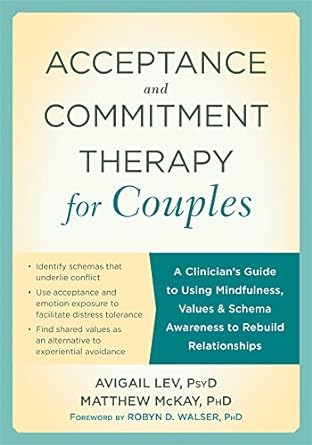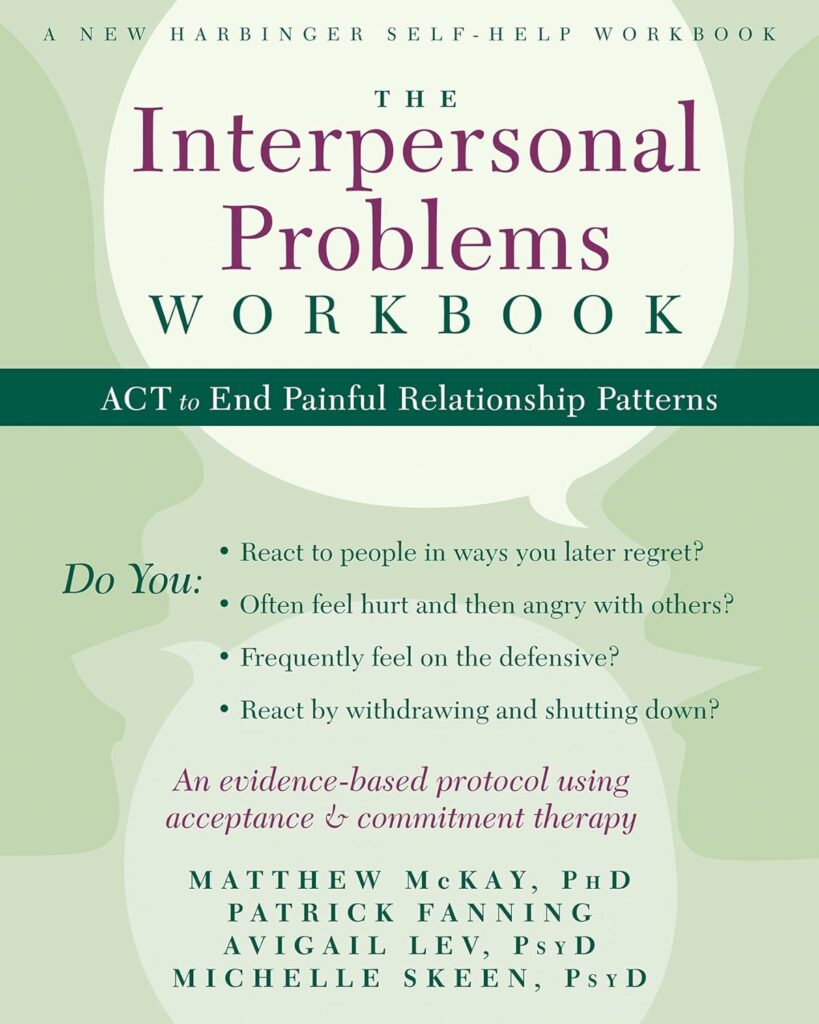In this blog post, we dive into cognitive-behavioral therapy (CBT) techniques specifically tailored for those grappling with a dismissive-avoidant attachment style. Dismissive avoidant individuals often prioritize independence to the point of pushing others away, viewing self-sufficiency as a shield against vulnerability. This attachment style can lead to challenges in forming and maintaining close relationships.
This article outlines practical CBT strategies to help individuals recognize and adjust the thought patterns and behaviors that reinforce dismissive avoidant tendencies, aiming to pave the way for more meaningful and connected relationships. Join us as we explore how to bridge the gap between independence and intimacy, fostering a healthier approach to connections.
What Is A Dismissive-Avoidant Attachment Style?
Individuals with a dismissive avoidant attachment style have a tendency to emotionally distance themselves from intimate relationships. They often suppress their emotional needs and maintain a sense of self-reliance and independence.

Individuals with a dismissive avoidant attachment style have a tendency to emotionally distance themselves from intimate relationships. They often suppress their emotional needs and maintain a sense of self-reliance and independence.If you have a dismissive-avoidant adult attachment style, you may be reluctant to seek emotional support from others or rely on them. You may struggle to express vulnerability, avoid emotional closeness, and fear feeling dependent on others.
As a result, you may prefer to maintain an emotional distance as a way to protect yourself from feeling engulfed, controlled, or deprived in relationships.
Individuals with an avoidant attachment style easily feel controlled or dominated, perceiving their partner’s actions or requests as infringing upon their independence and personal freedom. They often struggle with trust, harboring skepticism regarding their partner’s intentions and questioning their sincerity.
They are prone to feeling overwhelmed or suffocated by their partner’s emotional needs or dependency. They may perceive expressions of affection or closeness as an encroachment on their personal space and autonomy.
They feel a sense of pressure and obligation to meet their partner’s needs, which can lead to irritation or discomfort when others rely on them. They may prefer independence and self-sufficiency, finding it challenging to handle the demands or expectations that come with someone depending on them.
They appear emotionally distant, dismissive of their partner’s emotions or needs, and prioritize autonomy and self-sufficiency over emotional intimacy.
Causes of Avoidant Attachment
The development of this insecure attachment in adult relationships can be traced back to a child’s early experiences with attachment figures. According to attachment theory, children develop different attachment styles based on their interactions with primary caregivers.
In the case of avoidant adult attachment, the child’s emotional needs may have been consistently unmet or disregarded, leading them to develop a belief that they must be self-sufficient and independent to meet their own needs. This childhood relational trauma impacts adult attachment styles and the ability to sustain romantic relationships.
This early insecure attachment can carry into adulthood, where individuals may struggle to form close emotional bonds with others. They may be overly self-reliant, become critical of their partners, feel disconnected, withdraw emotionally and avoid relying on others for support.
The dismissive-avoidant attachment style contrasts with secure attachment, where individuals are comfortable with both intimacy and independence, as well as with anxious attachment, where individuals may feel a constant need for reassurance and fear abandonment in relationships. The effects of attachment styles in childhood can significantly impact adult relationships and overall well-being.
The Pursuer-Distancer Trap

When someone with a dismissive avoidant attachment style gets into a romantic relationship with someone who has an anxious attachment style, a common dynamic known as the anxious-avoidant trap can occur.
The anxious partner seeks closeness and reassurance, while the avoidant partner withdraws or becomes distant, triggering and reinforcing the anxious partner’s fears of abandonment and the avoidant partner’s fear of subjugation.
This cycle perpetuates as the anxious partner’s attempts to increase closeness push the avoidant partner further away, reinforcing their need for independence.
The more the person with an avoidant attachment withdraws, the more anxious their partner gets, and the more the anxious partner pursues the more the avoidant partner withdraws. This cycle reinforces and maintains each partner’s core fears in relationships.
Evidence-Based Tip For Coping With Dismissive-Avoidant Attachment

Evidence-based treatments can help heal avoidant-dismissive attachment and relational trauma. Schema therapy, for example, is a type of cognitive behavior therapy that focuses on identifying and modifying maladaptive schemas and core beliefs that contribute to avoidant attachment patterns. It helps individuals develop healthier ways of relating and establish secure attachments.
Sensorimotor psychotherapy can address the underlying somatic and sensory experiences associated with attachment trauma, facilitating healing on a deeper level.
Other therapies include mindfulness-based cognitive-behavioral therapy (CBT) and acceptance and commitment therapy (ACT), which help individuals cultivate self-awareness, compassion, and develop more flexible responses to emotions and relationships. These therapies can assist in challenging avoidant tendencies and developing more authentic connections.
Through evidence-based treatments and these core principles, individuals with anxious and avoidant attachment can gain insight into their attachment patterns, heal relational trauma, and develop healthier ways of relating.
Working with a therapist trained in these modalities, can help individuals with an avoidant attachment create secure and fulfilling relationships based on trust, vulnerability, and emotional intimacy.
Here are some coping skills you can try outside of therapy:
Identify Your Schemas

Develop an awareness of the interpersonal schemas that underlie your avoidant attachment style. Schemas are attachment related thoughts and beliefs that we develop about ourselves and others in relationships. These negative thoughts trigger schema-driven feelings and avoidant behaviors in relationships.
Common schemas for individuals with avoidant attachment include Emotional Deprivation (feeling emotionally disconnected or empty), Subjugation (fear of being engulfed and controlled), and Perfectionism (Setting unrelenting standards on others). Recognizing these schemas can help you understand the core beliefs that drive your avoidant tendencies.
Identifying your schemas can provide valuable insights into your attachment triggers, the associated thoughts and feelings, and facilitate a deeper understanding of your values.
Individuals with an avoidant attachment style commonly exhibit several schemas, including a subjugation schema, unrelenting standards schema, emotional deprivation schema, mistrust/abuse schema, and occasionally the entitlement/grandiosity schema.
Subjugation Schema: People with a dismissive avoidant attachment style often have a subjugation schema. They fear losing themselves in relationships or being engulfed and consumed by others. This fear leads them to feel compelled to submit to others’ demands or opinions to avoid rejection or conflict. As a result, they may suppress their own needs and desires, prioritizing the needs and wants of others instead.
Unrelenting Standards/Perfectionism Schema: Individuals with a dismissive avoidant attachment style may also exhibit an unrelenting standards schema. They tend to hold their partners to extremely high expectations and become overly critical. They may constantly seek perfection and set rigid standards that are difficult for their partners to meet. This pattern of high expectations can strain relationships and lead to dissatisfaction.
Emotional Deprivation Schema: A common schema experienced by people with a dismissive avoidant attachment style is the emotional deprivation schema. They fear that their emotional needs will go unmet in relationships, which can lead to a tendency to withhold and suppress their feelings. They may struggle to express their emotions openly, fearing vulnerability and potential rejection.
Mistrust/Abuse Schema: Another schema prevalent in individuals with a dismissive avoidant attachment style is the mistrust/abuse schema. They may find it challenging to trust others and believe that they can depend or rely on them. This mistrust stems from a belief that people have hidden agendas and may exploit or hurt them in some way. This schema can make it difficult to form deep connections and maintain healthy relationships.
Recognizing these schemas can help individuals gain insight into the underlying beliefs and patterns that contribute to their avoidant attachment style. Working with a therapist trained in evidence-based treatments can provide targeted interventions to challenge and modify these schemas, ultimately creating healthier attachment patterns and relationships.
Take the schemas quiz to find out your core beliefs in relationships
Challenge maladaptive schemas

Once you identify your attachment style and the associated schemas, work on challenging and reframing automatic thoughts connected to them. One effective way to challenge schema-driven thoughts connected to your dismissive/avoidant attachment is through engaging in behavioral experiments.
Start by identifying the core beliefs connected to your attachment style, such the subjugation/engulfment schema. Identify frequent automatic thoughts associated with this schema. Formulate a hypothesis related to these beliefs, such as “If I say ‘no’ or advocate for my needs in relationships, I will get punished or abandoned.”
Next, create specific situations or scenarios where you can test out your hypothesis and gather evidence against these beliefs. For example, intentionally say “no” to little things or say “let me think about it” instead. Practice with a trusted friend or partner, allowing yourself to be assertive and observe their response. Take note of their understanding and acceptance, which can challenge the core belief of inevitable retaliation.
During these experiments, pay close attention to your thoughts, emotions, and bodily sensations. Are there moments of doubt or anxiety?
Observe how your attachment style may influence your perceptions and interpretations. As you gather evidence contrary to your core beliefs, actively challenge and reframe them with more adaptive and realistic alternatives.
Gather evidence that disproves your belief, noting positive responses and respectful outcomes. Reframe your core belief with a more balanced perspective. Repeat the experiments to reinforce new beliefs and promote healthier assertiveness.
Remember to approach behavioral experiments with self-compassion and openness to learning. Not every experiment may yield the desired outcome, but each attempt provides valuable insights into the complexity of your attachment style and core beliefs. Reflect on the evidence collected and adjust your beliefs accordingly, recognizing that change takes time and effort.
Defuse from maladaptive schemas
Engage in cognitive defusion exercises to detach from the thoughts generated by your schemas. One approach is to repeat the thought associated with a schema out loud or in your mind multiple times until it loses its impact and becomes a mere sound or word.
Another technique is to imagine the thought written on a whiteboard and slowly erase or blur it, symbolizing its diminishing power over you.
Defusing from these schemas involves distancing yourself from their influence and challenging their validity. Here are some strategies to help defuse from maladaptive schemas:
1. Notice Your Thoughts: Begin by becoming aware of the thoughts associated with your maladaptive schemas. Pay attention to the recurring negative self-talk or limiting beliefs that arise in different situations. Recognize that these thoughts are products of your schemas, rather than absolute truths.
2. Label Your Schemas: Give your maladaptive schemas descriptive names that capture their essence. By labeling them, you create a psychological distance and remind yourself that they are patterns of thinking, not a reflection of your identity or worth.
3. Externalize the Schemas: Treat your schemas as external entities rather than integral parts of who you are. Imagine them as characters or voices separate from yourself. This helps you see them as separate from your true identity and enables you to challenge their influence.
4. Practice Mindfulness: Cultivate mindfulness to observe your thoughts and feelings without judgment. By being present and non-reactive, you can develop a sense of distance from your schemas and choose how you respond to them.
Practice Emotional Regulation
Enhance your ability to regulate emotions by identifying triggers and learning healthy coping strategies. Notice when you feel overwhelmed or detached emotionally, and engage in self-soothing activities that bring comfort and grounding.
Emotion regulation skills include various techniques, such as body scan, progressive muscle relaxation, self-compassion guided mindfulness, emotion exposure, and vagus nerve stimulation.
Emotion exposure is an effective strategy for exploring and processing emotions. You can incorporate emotion exposure as a helpful practice during moments of trigger when you sense that your dismissive avoidant attachment style is being activated.
This exercise is a techniques from exposure therapy, which is a component of cognitive behavioral therapy. It’s a coping skill to practice with the emotional challenges that show up for you in romantic relationships. It helps with stress management in social interactions and enhancing emotional health to form relationships that are safe and interdependent.
Take a moment to identify where in your body you feel the intensity of the emotion on a scale from 0 to 100%. Stay focused on the physical sensations and allow yourself to be open to experiencing the emotion just as it is.
Explore the qualities of the emotion by observing its color, shape, movement, and texture. Maintain your presence with the feeling and continue to monitor its intensity on the scale from 0 to 100%, while embracing it without judgment or resistance.
This exercise can support you in developing a deeper understanding and acceptance of your emotions, helping you navigate emotional difficulties and behavior patterns connected to your insecure attachment style.
Practice Self-Compassion

Self-compassion guided practices help people with insecure attachment styles cultivate a compassionate and nurturing attitude towards oneself. It typically involves guided meditation or mindfulness exercises focused on directing kindness and understanding towards one’s own experiences, emotions, and perceived shortcomings.
Through self-compassion guided practice, individuals learn to treat themselves with warmth, patience, and acceptance, fostering emotional well-being, resilience, and self-care.
It encourages acknowledging one’s struggles without judgment and offering oneself the same kindness and support one would extend to a loved one in challenging times.
Be kind and compassionate toward yourself as you navigate your negative emotions. Think of yourself as a little child or a crying baby and attend to yourself in a loving way.
Acknowledge that developing new relationship patterns takes time and effort. Treat yourself with patience, understanding, and forgiveness, embracing the growth process along the way.
Grounding Techniques
Incorporate grounding exercises into your daily routine. Take a few moments to focus on the sensations in your feet, such as the feeling of the ground beneath you or the pressure of your feet on the floor. Pay attention to your breath, using it as an anchor to bring yourself into the present moment.
Resource Anchoring
Identify positive internal resources that bring you a sense of safety and support. Visualize a memory, image, or experience associated with these resources and immerse yourself in the sensory details. This exercise can help you access positive emotions and build resilience.
Practice Pendulation
Learn to regulate your nervous system by intentionally shifting your attention between activating and calming experiences. Notice areas of tension or activation in your body, and then deliberately focus on a more calming sensation. Gradually alternating between these states can increase your capacity to tolerate different emotions and sensations.
Cultivate Self As Observer
For individuals with an avoidant attachment style, embracing the concept of self as observer is key. Develop the ability to observe and experience your internal states simultaneously.
Bring awareness to your thoughts, emotions, and bodily sensations while maintaining an observer perspective. This practice promotes self-compassion and curiosity, deepening your understanding of your internal processes.
Practicing self as observer, helps you develop the ability to step back and observe your thoughts and emotions without getting entangled in them. This perspective allows you to create distance from avoidant narratives and patterns, gaining a clearer understanding of your own experiences.
Imagine yourself as the sky, while your thoughts and emotions are the ever-changing weather. By identifying as the observer, you can witness the fluctuations of your inner world without being consumed by them. This metaphor reminds you that you are not defined by your thoughts or emotions; you are something greater—the expansive sky that holds it all.
In addition to self as observer, cultivate the practice of taking the perspective of others. This involves putting yourself in their shoes, seeking to understand their thoughts, feelings, and experiences. By embracing different perspectives, you can develop empathy, compassion, and a deeper connection with your partner.
Gradual Exposure
Challenge your avoidance tendencies by gradually exposing yourself to situations or experiences that trigger avoidance. Start with small steps and progressively increase your level of engagement. This gradual approach helps build confidence and tolerance for emotional closeness.
Mindful Communication
Practice mindful communication by staying present and fully engaged during interactions. Listen attentively to others, validating their emotions and experiences. Express yourself honestly and assertively, while remaining open to vulnerability and emotional connection. Mindful communication fosters deeper understanding and strengthens the foundation of secure relationships.
Nonviolent communication (NVC) is a particularly beneficial skill for individuals with insecure attachment. Learning and practicing NVC skills can help you can develop the ability to assertively express your needs and boundaries while remaining present and empathic to others.
NVC enables you to navigate challenging conversations without resorting to emotional distancing or detachment. Through mindful communication, you can develop healthier connections, build trust, and effectively get your needs met while maintaining a compassionate and respectful stance towards others.
Clarify Your Values
Engage in values clarification exercises to gain clarity on what is truly important to you in relationships and life. Reflect on the qualities and principles that you value most, such as trust, intimacy, connection, or independence.
Aligning your actions and choices with your core values can guide you towards developing healthier attachment patterns, changing unhelpful behavior, and fostering meaningful relationships. Here are some exercises to try:
Explore what matters: Values clarification exercises involve exploring what truly matters to you in life. Take a moment to reflect and ask yourself what deeply resonates with your core being. What do you want to prioritize and embody? Consider various aspects of your life, such as relationships, career, personal growth, and well-being.
Reflect on moments of trigger or challenge and ask yourself what values you want to uphold during those times. For instance, when feeling suspicious, explore what it means to be trustworthy or maintain honesty.
When feeling suffocated, delve into the value of personal autonomy and setting boundaries, while still remaining compassionate and connected.
Your Funeral: Take a moment to imagine your own funeral and reflect on what you would want people to say about you. Consider the kind of person you aspire to be, the type of partner, son/daughter, or friend you want to be remembered as. What qualities and values do you want to embody in those roles? What impact do you want to have on others?
Reflect on the words you would most want to hear people say about you and the legacy you want to leave behind. This exercise can provide valuable insights into your core values and help guide your actions, choices, and relationships towards a more purposeful and fulfilling life.
Connect values to triggers: When faced with moments of triggers or challenging emotions, ask yourself what values you want to embody in those situations. For instance, when you feel suspicious in your relationships, consider what values you want to bring forth in those moments.
Is it trust, honesty, or open communication? When you feel suffocated or engulfed, reflect on the values you want to uphold, such as interdependence, assertiveness, compassion, and/or healthy boundaries.
Connect values to schema-driven thoughts: Explore how your thoughts and feelings connect to your underlying schemas. Notice how certain thoughts or emotions might be tied to your learned patterns.
Reflect on how these schemas have attempted to limit or prevent you from engaging in certain behaviors that are important to you. For instance, has the thought that you will lose yourself prevented you from being vulnerable, honest, or assertive? Recognize how your schemas might be influencing your actions and choices.
Overcome schema-based limitations: Challenge the ways in which your schemas have limited you in the past. Ask yourself if these limitations have prevented you from engaging in meaningful and significant experiences.
Have they stopped you from pursuing authentic connections, expressing your true emotions, or asserting your needs?
By recognizing the impact of your schemas, you can actively work towards breaking free from their limitations and embracing a more fulfilling and authentic life.
Incorporate these tips into your daily life to promote healing and cultivate secure behaviors in your relationships. Developing secure behaviors in your relationships will allow you to experience increased intimacy, trust, and a sense of safety.
Conclusion
If you’re navigating an avoidant attachment style and looking for therapy in San Francisco, the Bay Area CBT Center specializes in helping individuals and couples foster secure, healthy relationships. Our approach includes deep self-reflection, understanding attachment styles, and learning effective coping strategies. Whether you need individual therapy, couples counseling, or online sessions, we offer tailored support, including for those in relationships or seeking marriage counseling. Our goal is to transform your connections into secure, loving partnerships by addressing the challenges unique to avoidant attachment.









































